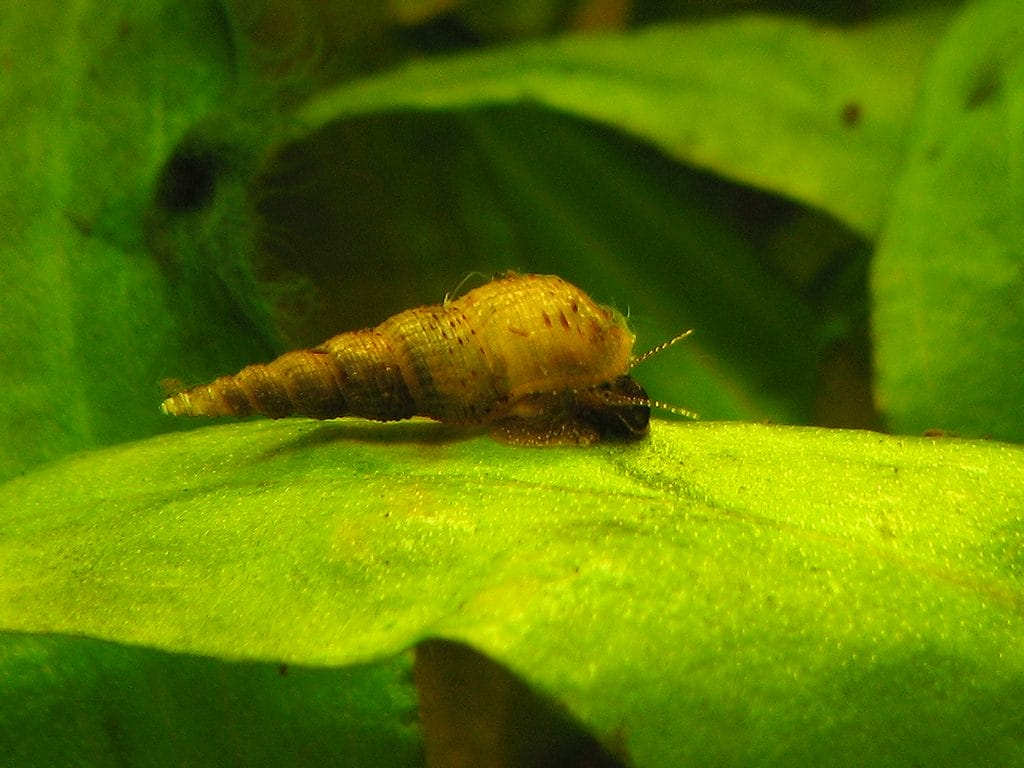
Beginner’s Guide to Caring for Brotia Snails
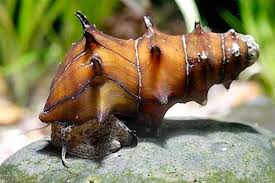
Brotia snails, especially the Brotia Herculea species called the White Hercules snail, are interesting freshwater snails. They are becoming very popular in home aquariums.
Their special look, friendly personality, and fun behaviors make them a great choice for any calm community tank. This guide has all the information you need for taking care of your Brotia snail.
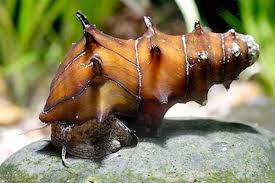
Read More : 18 Types of Freshwater Aquarium Snails You Should Have
Understanding Brotia Snails
Brotia snails are a type of snail that comes from a large family called Pachychilidae. They are found in the rivers of Southeast Asia. This region has a lot of different plants and animals, and Brotia snails fit right in. They can adapt well and live in many types of water.
Brotia snails are known for their unique cone-shaped shells. These shells often have spikes and detailed patterns on them. Their colors and sizes can vary, depending on the type of Brotia snail. They are mostly peaceful and can get along well with other gentle fish in a tank.
What Makes Brotia Snails Unique?
Brotia snails, especially the rare type called Brotia Pagodula, have interesting traits that make them stand out among freshwater snails. Research, like the “Systematic Revision of the Southeast Asian Freshwater Gastropod,” shows how diverse the Brotia genus is. Each species has slight differences in their shells, colors, and even their DNA, as seen in the “Mitochondrial Diversity of a Thai Freshwater Gastropod.”
These snails do not just eat algae. They prefer a diet of biofilm and detritus, carefully searching through the substrate for food. This scavenging behavior is beneficial. It makes them great for aquariums, helping keep the tank clean and healthy for the other animals.
Another unique thing about Brotia snails is that they give birth to live young. This way of reproducing is called viviparity. This special trait makes these creatures even more interesting.
The Natural Habitat of Brotia Snails
To take care of Brotia snails, we should look at where they naturally live. These snails come from the warm, tropical areas of Southeast Asia. They need certain conditions in their water and habitat. In the wild, Brotia snails mostly live in rivers and streams with clear, oxygen-rich water. These waters usually flow at a moderate to fast speed, which helps the snails get enough oxygen to live well.
The ground in their natural homes is often made up of sand, gravel, and rocks. This gives the snails places to hide and eat. Also, fallen leaves and branches help break down and create food for the snails. The Genus Brotia can do well in different types of soil, even muddy ones, showing how adaptable they are in different places.
When setting up their home aquarium, it’s important to think about these needs. Make sure to have a big tank with good water flow, a suitable substrate, and similar water conditions. This is essential for keeping your Brotia snails happy and healthy.
Breeding pagoda snails
Breeding Brotia snails, particularly the Brotia Pagodula or Pagoda snail, can be an exciting endeavor for aquarium enthusiasts. Unlike many other snail species that lay eggs, Pagoda snails exhibit viviparity, meaning they give birth to live young. This unique reproductive strategy involves the female carrying the developing snails in a specialized brood pouch located within her body.
The brood pouch acts as a safe and nurturing environment for the young snails to grow until they are ready to emerge as fully formed miniature versions of their parents. While it may be challenging to distinguish males from females visually, observing their behavior can provide clues. If you notice snails pairing up and engaging in what appears to be mating behavior, you might be in for a pleasant surprise in the form of tiny snail offspring.
| Characteristic | Description |
| Reproduction method: | Viviparous |
| Brood size: | Typically 1-3 offspring at a time |
| Development: | Young snails develop within the mother’s brood pouch |
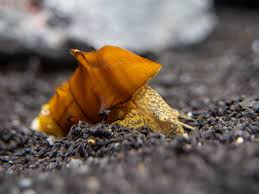
Setting Up Your Aquarium for Brotia Snails
Creating a good home for your Brotia snails means making it close to what they enjoy in nature. A well-thought-out aquarium setup helps keep them healthy.
It also lets them act naturally and may even help them breed. The first step is to pick the right tank size and check the water conditions. A bigger space helps the water flow well and gives your snails room to move around and feed.
Next, think about using substrates like sand or fine gravel. This mimics their natural riverbed home. You can also add rocks, caves, and driftwood. These items give them places to hide and make your aquarium look nicer. This setup creates a fun and engaging environment for your Brotia snails to explore.
Choosing the Right Tank Size
One important thing to think about when setting up an aquarium for your Brotia snails is the right tank size. These snails are not very big, but they need enough room to move around and eat comfortably.
A tank that is too small can cause stress, slow their growth, and even lead to fights with other tank mates. A larger tank helps to dilute waste, which creates a healthier and more stable home for your snails.
As a good rule, aim for a tank that holds at least 10 gallons, which is about 40 liters. This amount of space is enough for a small group of Brotia snails to live well. If you want to keep more snails or add different species, consider getting a tank of 20 gallons, or about 80 liters, or bigger.
Remember, when it comes to tank size, bigger is better. Brotia snails like space to graze and explore. A larger tank also gives you more options for setting it up, making it pleasant for both you and your aquatic friends.
Essential Water Parameters and Filtration
To keep your Brotia snails healthy, you need a good tank size and water quality. These snails like slightly alkaline water, with a pH between 7.0 and 8.0. You should regularly check the water pH, ammonia, nitrite, and nitrate levels. This helps keep their environment stable.
Brotia snails are found in areas with moderate to fast-moving water. So, using a filter with the right flow rate can help create similar conditions. This will also keep the water well-oxygenated, which is important for the snails’ breathing and health.
It’s also crucial to do regular water changes. Try to change 25-30% of the water every week. This helps add essential minerals back into the water and removes waste. Doing this can help prevent health issues and keep your Brotia snails around for a long time.
Tankmates
Choosing the right tank mates for your Brotia snails is key to a happy community tank. These snails are peaceful and get along well with other calm species. When picking tank mates, look for types that need similar water conditions and are not aggressive.
Good tank mates include small, gentle fish like certain tetras, rasboras, or dwarf gouramis. You can also add invertebrates like Blue Velvet Shrimp or Blue Tiger Shrimp. These shrimp are great friends for Brotia snails.
Stay away from large, aggressive, or hunting species. They might see the snails as food. It’s also wise to keep crayfish out of the tank. Their need for space and feeding habits can harm the snails. Careful choices about tank mates help make a healthy and balanced aquarium.
Light, Decorations, etc.
Brotia snails do better in low to moderate lighting instead of bright lights used for some fish. You don’t need special lights for them, but choosing softer lighting makes their home feel more natural and cozy. Adding live aquarium plants is a smart move for any freshwater tank, even with Brotia snails.
Plants not only make the tank look better, but they also help by providing oxygen and giving snails places to hide. Good plant choices for a tank with Brotia snails are Java Fern, Anubias, and Cryptocoryne. These plants are easy to take care of and can grow in water conditions similar to what Brotia snails like.
You can also add decorations like rocks, driftwood, and caves in your tank. These can create hiding areas and block sight lines, which helps to make your snails feel less stressed.
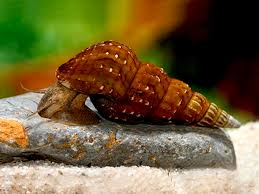
Beginner’s Guide to Caring for Brotia Snails
Caring for Brotia snails is easy. They are a great choice for both new and experienced aquarium owners. By following a few simple steps, you can help them grow and be healthy.
First, you need to get all the supplies. This includes a good tank, filter, heater, substrate, and decorations.
After setting up your aquarium, focus on providing a good environment for your snails. This means keeping the water quality high with regular water changes. You should also check water parameters often and give them a balanced diet.
Step 1: Gathering Your Supplies
Before you add your Brotia snails to their new home, it’s very important to gather the right supplies. Start with a big aquarium. It should hold at least 10 gallons for a small group of snails. You also need a good filter to keep the water quality high. Make sure to add a heater to keep the water warm, between 72-82°F or 22-28°C.
Next, choose a substrate made of fine sand or gravel. This will help the snails graze comfortably and allow them to burrow, which is natural for them.
Calcium supplementation is really important too. Snails need calcium to make and maintain their shells. Without enough calcium, their shells could become damaged or weak. This makes them more prone to injuries and diseases. Giving them calcium-rich foods or supplements will help them stay healthy.
Finally, remember to include algae in their environment! Brotia snails love eating algae. If your tank isn’t ready yet, you can give them algae wafers or blanched vegetables until there’s enough algae growing.
Step 2: Creating an Optimal Environment
Once you have all the supplies, it’s time to make a nice home for your Brotia snails. Start with the substrate. A fine sand or gravel bed is best. It looks like their natural home and lets them burrow. This helps them feel safe and happy.
Next, focus on water quality. Before you add your snails, make sure the aquarium is fully cycled. This means you need good bacteria to break down bad waste and keep the nitrogen cycle healthy. Check the water quality often with a test kit to keep it in the right range for Brotia snails.
Tank size is also very important for water quality. A bigger space helps water flow well and keeps waste from piling up. Make sure your tank size fits the number of snails and any other tank mates to help keep everything balanced.
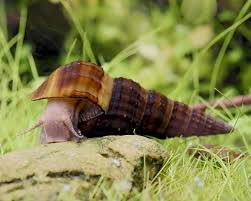
Diet and Nutrition: What Do Brotia Snails Eat?
Brotia snails mainly eat plants, which means they are herbivorous. Their main food is algae. In nature, they feed on algae that grows on rocks, driftwood, and other surfaces. They also eat biofilm, which is a thin layer of bacteria and tiny organisms found on surfaces in the aquarium.
Even though algae and biofilm are important parts of their diet, it’s good to add blanched vegetables like zucchini, spinach, and kale for better nutrition. You can also use algae wafers made for herbivorous bottom feeders to make sure they get enough nutrients.
Identifying Suitable Foods
Brotia snails have easy diets and will eat many kinds of food. However, it’s important to give them a balanced diet rich in nutrients for their healthy growth.
Algae is a big part of their diet, you can help algae grow in your tank by using proper lighting. You can also add algae wafers or pellets made just for snails if you need more.
You can also feed your Brotia snails blanched vegetables like zucchini, spinach, and kale. Blanching softens the vegetables, which helps snails eat and digest them better. To blanch, put the vegetables in boiling water for a minute or two. Then, cool them quickly in an ice bath. Once they are cool, you can feed them to your snails.
Be careful not to overfeed your snails, as leftover food can spoil and hurt water quality. Check on what your snails eat in a few hours. If there is any uneaten food, take it out to keep their home clean and healthy.
Feeding Schedule and Portions
Establishing a regular feeding schedule is very important for your Brotia snails. This will help keep them healthy and happy. It also allows you to check their eating habits and spot any problems early. A good rule is to feed them once a day or every other day. This depends on their size and how many snails are in your aquarium.
When choosing how much to feed, it’s best to be careful and avoid giving too much. Watch how much your snails eat within a few hours, and quickly remove any leftover food. You can offer them different foods like algae wafers, cooked vegetables, and small amounts of fish flakes or pellets made for bottom feeders.
Mixing up their diet is great for giving them different nutrients and keeping them interested. Each aquarium is different, so the best feeding schedule and portion sizes might change. By closely watching your snails, you can change their feeding plan if needed. This way, you help them stay happy, healthy, and thriving.
Conclusion
Caring for Brotia snails can be a fun job for new fish keepers. It’s important to know what they need and where they come from for them to live well. You should set up a good aquarium for them, choose safe tank mates, and give them the right food to help them grow in your tank.
Always check the water quality, offer different kinds of food, and make a nice place for them to breed. Keeping Brotia snails healthy takes work and focus, but it’s really exciting to watch them move around and contribute to your aquarium. If you want to add Brotia snails to your aquarium, this guide will help you start off the right way.
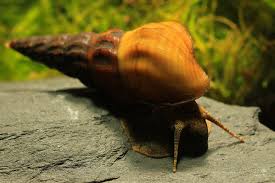
Frequently Asked Questions
Where can I buy Brotia snails?
Brotia snails, such as the Brotia Herculea or the White Hercules snail, are available at trustworthy online aquarium stores. If you want snails from their homes in Thailand or Myanmar (formerly Burma), make sure to buy from suppliers who focus on ethical and sustainable practices.






